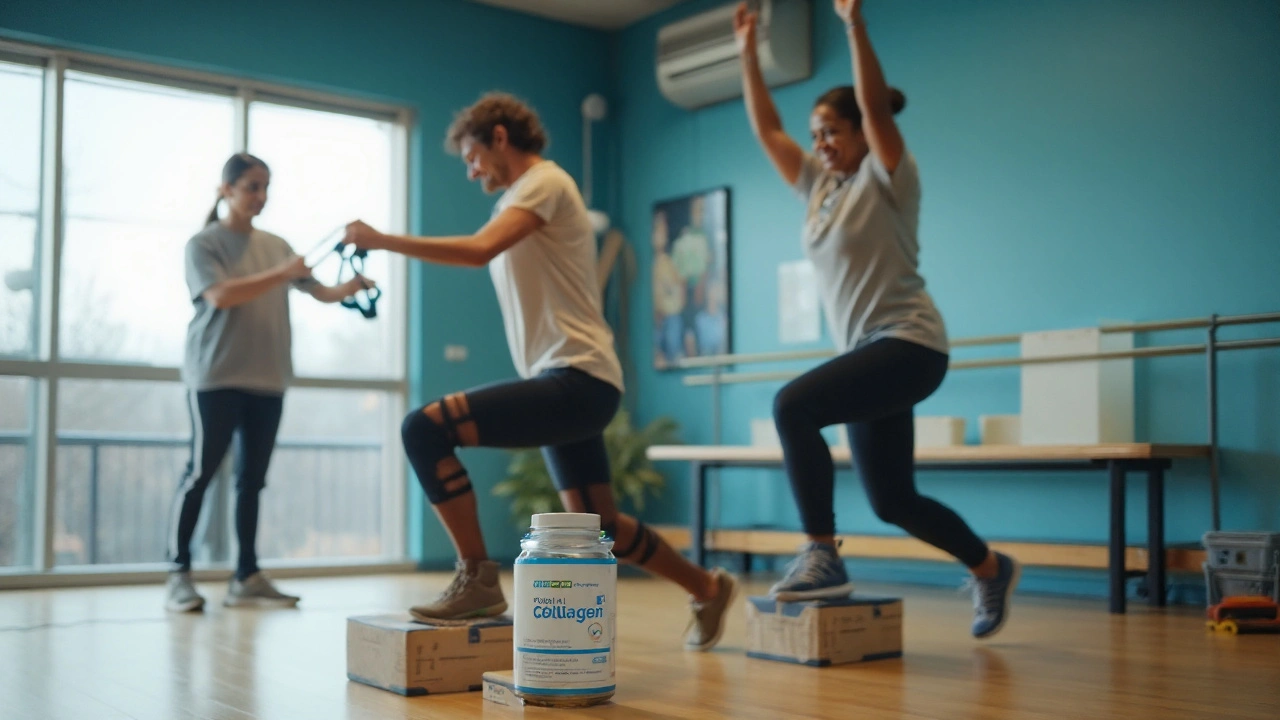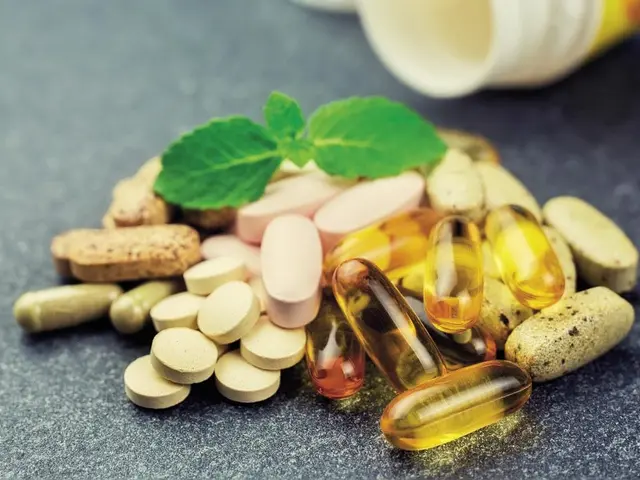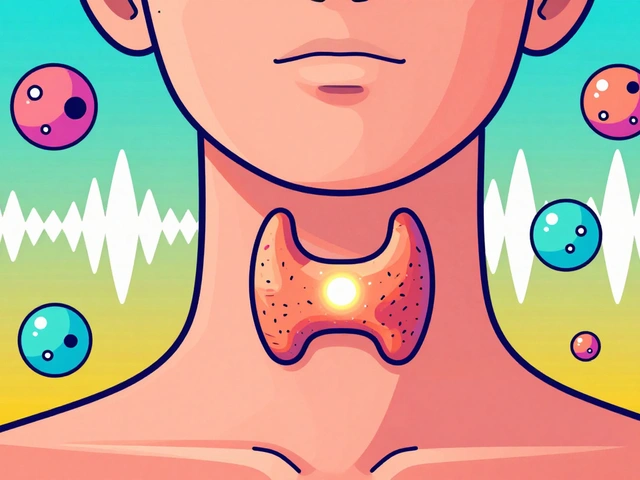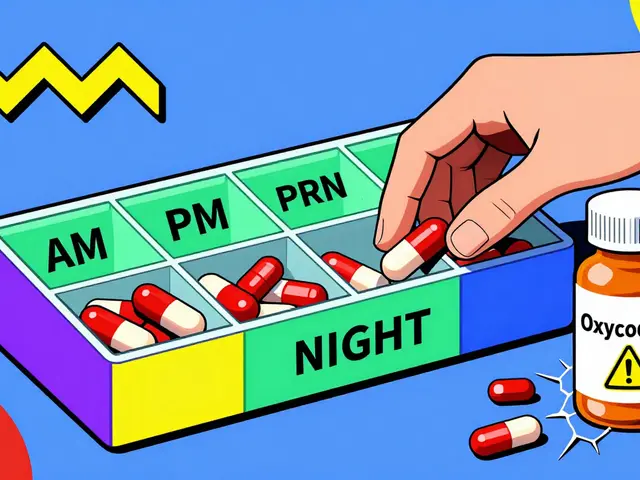If your knees complain on the stairs or your hips grumble after a walk, you’re looking for something that actually changes how your joints feel day to day. Collagen type II is getting a lot of buzz for a reason: in several solid trials, it eased pain and improved function for people with cranky joints. It’s not a magic pill. But used right-and paired with smart movement-it can tip the odds in your favour.
- TL;DR: Native (undenatured) collagen type II at 40 mg/day has clinical evidence for reducing knee pain and improving function within 4-12 weeks. Hydrolyzed type II may help too, but data is stronger for native.
- Best fit: mild-to-moderate osteoarthritis or activity-related knee discomfort; not a cure for severe joint damage.
- Buy right: look for UC‑II or “undenatured type II collagen” at 40 mg per day, TGA-listed in Australia (AUST L), and third‑party tested.
- Safety: generally well-tolerated; avoid if you’re allergic to chicken. Check with your GP if pregnant, immunosuppressed, or on complex meds.
- Realistic expectations: small-to-moderate pain relief and better range of motion; stack with strength training, weight management, and sleep.
What Collagen Type II Does for Your Joints
Cartilage is the smooth, rubbery tissue that lets your joints glide. Its backbone is type II collagen-think of it as the scaffolding that holds everything together. When that scaffolding thins or frays, movement hurts. Supplementing with collagen type II works in two main ways depending on the form you choose.
Undenatured (native) type II collagen-often labeled UC‑II-keeps its natural shape. In small daily doses, it appears to train the immune system to stop overreacting to your own cartilage. That “oral tolerance” effect is why the dose is tiny (40 mg) yet still helps in trials. Hydrolyzed type II collagen is broken into peptides. It doesn’t do the immune trick, but it supplies amino acids and cartilage-specific peptides that may support tissue repair over time.
Not all collagen is the same. Type I and III (common in beauty powders) target skin, hair, and tendons. For joints, the evidence leans toward type II, especially the undenatured form.
What the studies show:
- Knee osteoarthritis: In a randomized, double‑blind trial (Crowley 2009), 40 mg/day undenatured type II outperformed a common glucosamine/chondroitin combo on pain and function scores over 90 days.
- Active adults: In healthy subjects with activity‑related knee pain (Lugo 2013), 40 mg/day improved knee extension and reduced discomfort during strenuous exercise after 120 days.
- Meta‑analysis: Reviews up to 2021-2023 report modest but meaningful reductions in pain and improved function versus placebo, with good safety. Effects typically appear by week 4-8 and build to week 12.
How big are the benefits? Think “noticeable,” not “new knees.” Pain scores often drop by 15-30%, and daily activities (climbing stairs, getting up from a chair) feel smoother. If your joints are severely damaged, you may feel less change because there’s less cartilage to support.
How it compares to other common options:
- Glucosamine/chondroitin: Mixed evidence; some benefit in certain formulations. UC‑II has head‑to‑head data showing better function improvements in one trial.
- Type I/III collagen peptides: Good for skin/tendon; joint data exists but is stronger for type II.
- Curcumin (turmeric), omega‑3s: Useful anti-inflammatories that can complement type II collagen.
- Topical NSAIDs (like diclofenac): Often give quicker pain relief; guidelines in Australia recommend them for knee OA. Collagen is a background support, not an instant fix.
Quality and safety notes (Australia): Supplements here are regulated as “listed medicines” by the TGA. That means safety and quality standards, but efficacy claims still vary by product. Look for the AUST L number on the label and choose brands that publish testing. If in doubt, ask your pharmacist-here in Perth, they can quickly check interactions and brand quality.
Quick evidence snapshot:
| Study | Population | Form & Dose | Duration | Main Outcomes |
|---|---|---|---|---|
| Crowley 2009 (DB-RCT) | Knee OA (n≈90) | Undenatured type II, 40 mg/day | 90 days | Greater improvement in WOMAC pain/function vs glucosamine+chondroitin |
| Lugo 2013 (DB-RCT) | Active adults with knee discomfort (n≈55) | Undenatured type II, 40 mg/day | 120 days | Better knee extension; reduced exercise-related joint pain vs placebo |
| Systematic reviews 2021-2023 | OA and active adults (multi-trial) | Mostly UC‑II 40 mg/day; some hydrolyzed type II | 8-24 weeks | Modest pain/function gains; strong safety profile |
Sources: peer‑reviewed RCTs and meta‑analyses (e.g., Crowley 2009; Lugo 2013, 2016 updates; Liu 2021 review), plus Australian OA guidance from RACGP recommending exercise, weight management, and topical NSAIDs as first‑line-supplements are adjuncts.

How to Use It: Doses, Buying Smart, and a Simple 12‑Week Plan
The form matters. Here’s how to pick and use collagen type II without wasting time or money.
Forms and doses that match the evidence:
- Undenatured (native) type II collagen (UC‑II): 40 mg once daily. Taken with or without food, often on an empty stomach in the evening to keep it easy. This is the form with the best pain/function data.
- Hydrolyzed type II collagen: commonly 1-2 g/day. Evidence is emerging; it may help but hasn’t outperformed UC‑II in head‑to‑head trials.
- Combo products (type I/II/III): Fine for general wellness; check the label to make sure you still get 40 mg undenatured type II if joint support is your main goal.
Shopping checklist (Australia‑specific):
- Label says “undenatured type II collagen” or UC‑II at 40 mg per daily serve.
- TGA AUST L number present; brand lists allergens (most type II is chicken‑derived).
- Third‑party tested (NSF, Informed‑Choice) if you’re an athlete.
- Minimal fillers; capsule count matches a 30-90 day supply.
- Price: in 2025, expect roughly AU$35-$75/month for UC‑II in Australia.
Good stacks (optional):
- Curcumin 500-1000 mg/day (standardized) for extra anti‑inflammatory support.
- Omega‑3s 1-3 g/day EPA+DHA for joint stiffness, especially if your diet is low in fatty fish.
- Vitamin D if you’re low-lots of Aussies are, even in sunny Perth-because low D links with worse musculoskeletal pain.
What not to do:
- Don’t expect overnight relief-give it 8-12 weeks.
- Don’t double the dose “for faster results.” UC‑II works via immune tolerance; more isn’t better.
- Don’t skip strength work. Supplements won’t fix weak quads or glutes.
Simple 12‑week starter plan:
- Pick a UC‑II product at 40 mg/day. Take it daily at the same time.
- Baseline today: rate pain (0-10), note key activities (stairs, 30‑min walk), and set a clear goal (e.g., “Walk 5 km without knee pain above 3/10”).
- Week 1-2: start low‑impact strength 3x/week-sit‑to‑stand, step‑ups, calf raises; 2 sets of 8-12 reps each leg.
- Week 3-4: add cycling or brisk walking 20-30 minutes on 2-3 days. Track stiffness on waking.
- Week 5-8: progress strength (add resistance band), increase walk pace or hills if pain stays ≤3/10 during and after.
- Week 9-12: reassess pain/function and decide: continue, adjust, or trial a different approach if no meaningful change.
Rule of thumb for progress: if your average pain drops by 2 points or your daily step count climbs 20% with the same pain, you’re winning. If nothing shifts by week 12, reconsider the plan.
Side effects and who should avoid it:
- Common: rare, mild GI upset or headache. Take with food if sensitive.
- Allergy: avoid if allergic to chicken products (most type II is chicken sternal cartilage).
- Pregnancy/breastfeeding: not enough data; check with your GP.
- Autoimmune conditions or on immunosuppressants: discuss with your specialist; UC‑II affects immune tolerance.
Interactions: none of high concern are well documented. I still like a pharmacist to eyeball your meds list, especially if you’re on multiple prescriptions.
How fast will you feel it?
- Early hint: 2-4 weeks (less morning stiffness).
- Noticeable change: 6-8 weeks (easier stairs, longer walks).
- Peak effect: 12 weeks. That’s the typical endpoint in trials.
Real‑world examples:
- Runner in his 50s with knee OA: sticks to UC‑II daily plus leg strength twice a week; by week 8, he’s back to 3 short runs a week with pain under 3/10.
- Tradie with sore shoulders: adds UC‑II, swaps heavy overhead lifts for landmine presses, and sleeps 7.5 hours; less morning ache by week 4.
- Desk worker with hip tightness: UC‑II plus daily 10‑minute mobility and walking breaks; stiffness score halves by week 6.
Make It Work Long Term: Training, Food, Tracking, and Your Questions
Supplements are the support act. The headliner is how you move, eat, and sleep. Here’s the sustainable mix.
Training plan that joints like:
- Strength: 2-3 days/week. Prioritise quads (sit‑to‑stand, wall squats), glutes (bridges, step‑ups), calves (raises). Progress slowly: add reps, range, or resistance-not all at once.
- Cardio: cycling, swimming, elliptical, or brisk walking. Use the “talk test”: you can talk in sentences, not sing.
- Movement snacks: every hour, stand and move 1-2 minutes if you sit all day.
- Pain rule: 0-3/10 during and after is fine; if it spikes to 5+, reduce volume next session.
Food and recovery:
- Protein target: about 1.2-1.6 g/kg/day if you’re active or over 50. Helps maintain muscle that stabilises joints.
- Anti‑inflammatory bias: olive oil, nuts, legumes, colourful veg; fish 2-3x/week or omega‑3 supplement.
- Hydration: your cartilage is about two‑thirds water. Thirst is a late signal-sip across the day.
- Sleep: aim 7-9 hours. Pain thresholds drop when sleep does.
How to track results without overthinking it:
- Pick two anchors: stairs score (0-10) and 30‑minute walk comfort score (0-10). Note them weekly.
- Activity log: steps or minutes of cardio; sets and reps for strength work.
- Milestones: week 4, 8, 12 check‑ins. If nothing’s changing, change something.
Quick decision guide:
- If your pain is mainly after exercise and settles in a day: UC‑II may help you tolerate training better; keep building strength.
- If your pain is constant, swollen, and warm: see your GP to rule out inflammatory arthritis; you may need a different plan.
- If your BMI is high and knees hurt: pairing UC‑II with a 5-10% weight loss often boosts results more than either alone.
Mini‑FAQ
Is UC‑II the same as hydrolyzed collagen? No. UC‑II is undenatured and works via immune tolerance at 40 mg/day. Hydrolyzed is broken into peptides and usually taken at grams per day; it may help but the strongest joint pain data is with UC‑II.
Can I take it with NSAIDs or paracetamol? Yes, they work by different mechanisms. If you’re relying on daily NSAIDs, speak with your GP about gut and kidney safety and consider topical NSAIDs for knees.
Is it vegetarian or marine‑based? Most type II collagen is from chicken cartilage. If you need a non‑animal product, you’ll be looking at alternative joint supports (like curcumin or Boswellia), not true type II collagen.
What do Australian guidelines say? RACGP guidelines prioritise exercise, weight management, and topical NSAIDs. Supplements like UC‑II can be considered as adjuncts if they help you move more with less pain.
How long should I stay on it? Give it 12 weeks. If you respond, many people continue for maintenance. You can trial a 4-6 week break later to see if symptoms return.
Any issues for diabetes, blood pressure, or blood thinners? Collagen type II isn’t known to affect blood sugar, blood pressure, or bleeding risk. Still, if you’re on multiple meds, ask your pharmacist or GP.
Can teenagers or athletes use it? Yes for athletes (choose tested products). For teens, focus on technique and load management first; discuss supplements with a clinician.
Next steps
- If you’re new to supplements: start UC‑II 40 mg/day, set two simple metrics, and book a 10‑minute pharmacist chat to confirm no interactions.
- If you’ve tried glucosamine with no luck: switch to UC‑II and add a quad‑strength routine for 8-12 weeks before judging.
- If your pain is sharp, swollen, or wakes you at night: see your GP-rule out gout, inflammatory arthritis, or meniscal injury.
Troubleshooting
- No change at week 6: check adherence; add or adjust your strength plan; consider pairing with omega‑3 or curcumin.
- Still no change at week 12: stop for 2 weeks to confirm no rebound; consider alternative strategies (physio‑led program, topical NSAIDs, hyaluronic acid injections if appropriate).
- Stomach upset: take with food or switch brands; if it persists, consider hydrolyzed type II or a different joint support.
- Allergy signs (rash, itching): stop and seek medical advice.
Credibility notes: Claims above are grounded in randomized trials (e.g., Crowley 2009; Lugo 2013/2016) and systematic reviews up to 2023. Australian context reflects TGA rules for listed medicines and RACGP osteoarthritis guidance revised in recent years. The bottom line for 2025: with steady use and smart training, type II collagen is a reasonable, low‑risk lever for milder joint pain-especially knees-when you’re chasing better movement, not miracles.





Ben Muncie
August 29, 2025 AT 23:1640mg is a joke-don't waste your money on this.
kevin tarp
September 7, 2025 AT 23:16The meta-analysis citation should be 'Liu et al. 2021' for academic precision, not just 'Liu 2021'.
ravi kumar
September 16, 2025 AT 23:16Indian Ayurveda has used Boswellia for joint pain for 5000 years. Chicken collagen is a Western gimmick. Real medicine doesn't need TGA labels.
SandraAnn Clark
September 25, 2025 AT 23:16Meh. Tried it. Didn't help. Waste of time. Just take ibuprofen like normal people.
Keisha Moss Buynitzky
October 4, 2025 AT 23:16Thank you for this meticulously researched guide. The emphasis on combining UC-II with strength training aligns perfectly with RACGP's holistic approach to osteoarthritis management. The TGA checklist is particularly valuable for Australian users.
Shivam yadav
October 13, 2025 AT 23:16As an Indian wellness coach, I've seen patients respond well to combining UC-II with turmeric and ashwagandha. The 12-week plan fits seamlessly into Ayurvedic routines. Great to see Western science validating traditional practices.
pallabi banerjee
October 22, 2025 AT 23:16I've been using UC-II for my mom's knee pain for 3 months now. She started with the 40mg dose and added simple bodyweight exercises. After 8 weeks, she's walking her dog without stopping. The pain score went from 7 to 3. The author's tracking tips made it so easy to see progress. Thank you for making this accessible.
Alex EL Shaar
October 31, 2025 AT 22:16This article is definately full of hype. 40mg? That's a joke. The studies are tiny and the results are barely significant. Don't waste your cash on this snake oil. Real joint relief comes from actual exercise, not chicken cartilage paste.